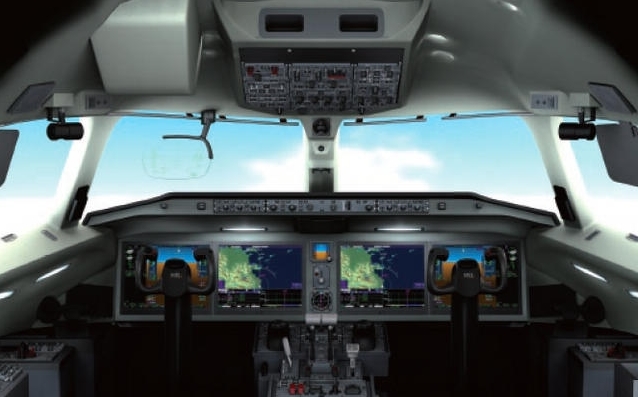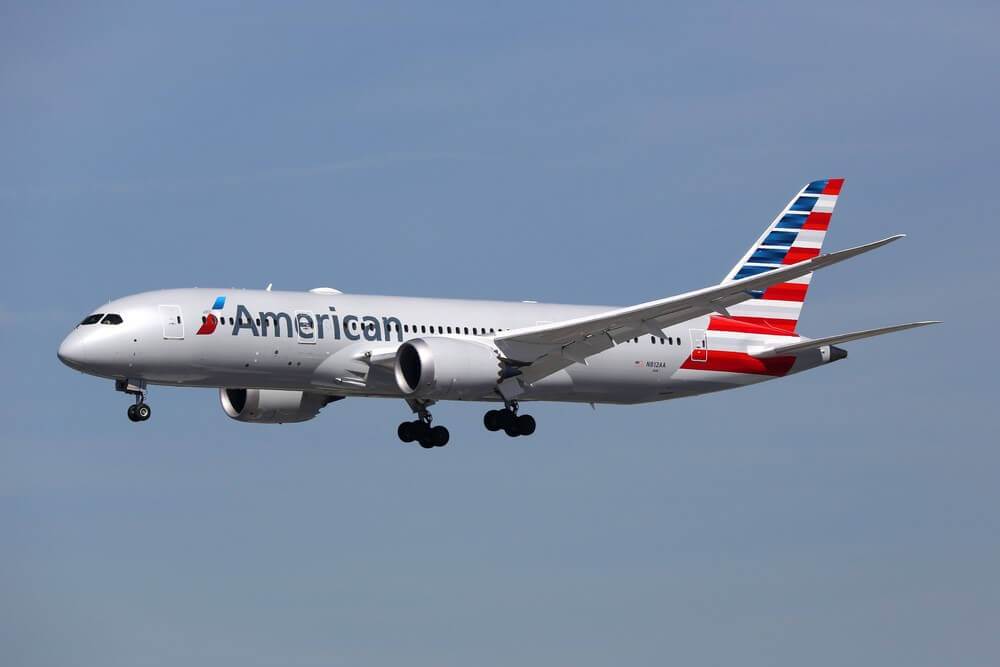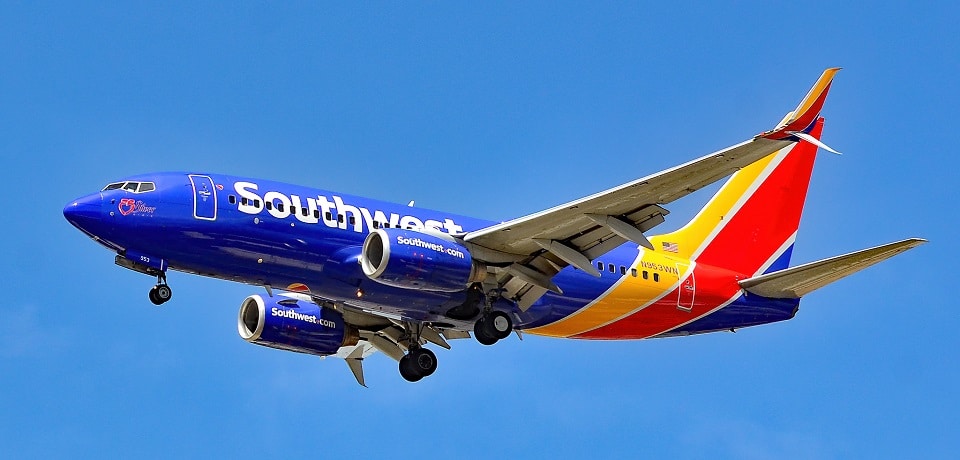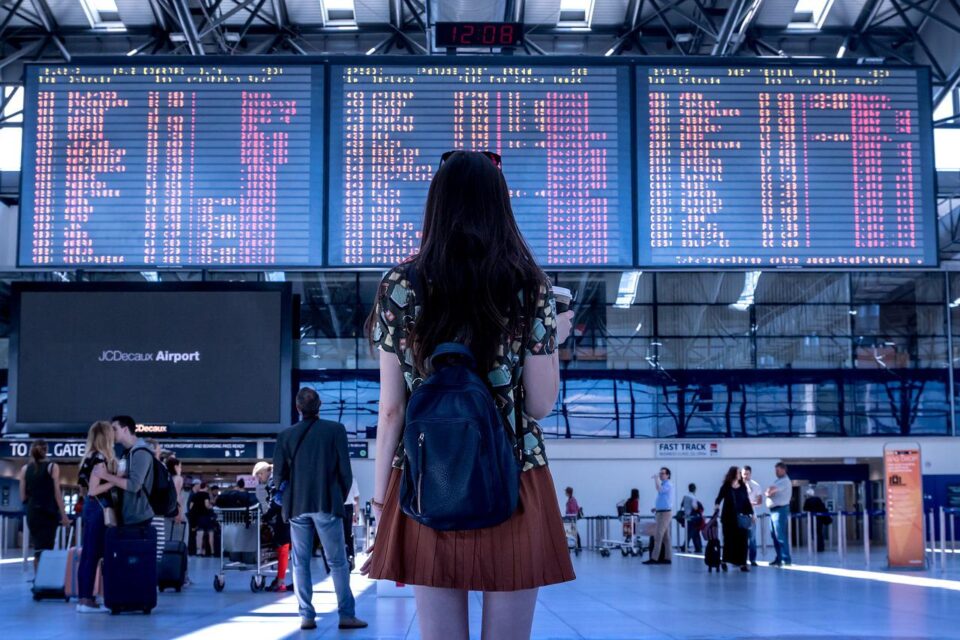Aviation
Japan’s first passenger jet makes maiden test flight

Nagoya, November 11, 2015 –
Mitsubishi Aircraft Corporation and Mitsubishi Heavy Industries, Ltd. (MHI) today conducted the first flight of the first flight test aircraft for the MRJ (Mitsubishi Regional Jet), their next-generation regional jet.
The MRJ took off from Nagoya Airport and confirmed its basic characteristics and functionality in ascent, descent and turning in airspace off the Pacific coast during its 1.5-hour first flight.
“The MRJ successfully took to the sky today thanks to ongoing cooperation and support from all members involved,” said Hiromichi Morimoto, President, Mitsubishi Aircraft Corporation. “We will make our utmost efforts towards type certificate acquisition, committing all our resources to develop and produce the finest regional jet aircraft to enter commercial service in 2017.”
“Operational performance of the MRJ was far better than expected. We had a significantly comfortable flight,” said Pilot Yasumura, who served as captain.
Mitsubishi Aircraft and MHI will continue to conduct flight tests for the first delivery scheduled for the second quarter of 2017. The flight tests in the US are scheduled to start in the second quarter of 2016, from the MRJ base at Grant County International Airport at Moses Lake in Washington State.
Going forward, Mitsubishi Aircraft and MHI continue to devote their collective resources towards the successful completion of the MRJ project.The unit of Mitsubishi Heavy Industries, which built the World War Two-era Zero fighter, is hoping the $47-million regional jet will help it oust Canada’s Bombardier Inc as the world’s second-biggest maker of smaller passenger jets behind Brazil’s Embraer SA.
The MRJ is Japan’s first commercial passenger aircraft since the 64-seat YS-11 entered service 50 years ago. The first MRJ is slated for delivery in June 2017 to Japan’s biggest carrier, ANA Holdings. Mitsubishi aims eventually to sell more than 2,000 aircraft in the competitive market segment. Mitsubishi says the MRJ burns a fifth less fuel than aircraft of similar size, thanks to new-generation engines from Pratt & Whitney, a subsidiary of United Technologies Corp.
Japan’s last attempt to establish itself as a commercial aircraft maker ended in failure. Production of the YS-11, built by a consortium that included Mitsubishi Heavy, finished after only 182 planes were built.
That program however helped Mitsubishi Heavy and other companies forge ties with Boeing Co, turning them into major suppliers and partners of the U.S. aircraft maker and helping revive an aerospace industry that was dismantled after World War Two.
Features :
Clean Sheet Innovation born from freedom , A clean sheet can be liberating. No preexisting platforms to conform to. No parts bins to raid. The results are the most efficient, comfortable and reliable 70- and 90-seat jets to ever take flight.
Clean sheet advantages
- Highest fuel efficiency
- Lowest environmental impact
- Most passenger comfort
- Designed to increase reliability
Engine
MRJ is proud to be the launch customer for Pratt & Whitney’s PurePower® Geared Turbofan™ engine which was optimized specifically for the MRJ. The new gear system allows the fan, low pressure compressor and turbine to rotate at optimum speeds which enables engine to have game-changing fuel efficiency. In addition, its Geared Turbofan™ engine architecture requires 60% fewer turbine airfoils than conventional turbofan engines and reduces maintenance time and cost.
A new view on the horizon . The most advanced, full fly-by-wire, flight deck available today is right at home aboard the MRJ. Featuring the Pro Line Fusion® system, the latest in avionics technology from Rockwell Collins, the MRJ’s flight deck maximizes situational awareness with four 15-inch landscape LCDs that deliver unprecedented clarity and information. The modern and stylish cabin of the MRJ introduces new values in the interior comfort of regional jet aircraft. Passengers will be very comfortable as the MRJ will provide wide cabin space, comfortable slim seats, large overhead bins, and lavatory for passengers with reduced mobility.
MRJ90 versions
class at 31″ pitch)Cargo Compartmentm3 (ft3)18.2 (644)Engine PurePower®
PW1217G EngineEngine ThrustkN (lbf)78.2 (17,600) x 2Maximum Takeoff Weightkg (lb)39,600 (87,303)40,995 (90,378)42,800 (94,358)Maximum Landing Weightkg (lb)38,000 (83,776)38,000 (83,776)38,000 (83,776)Maximum Zero Fuel Weightkg (lb)36,150 (79,697)36,150 (79,697)36,150 (79,697)Range @ 88PAX x 102kg (225lb)km (nm)2,120 (1,150)2,870 (1,550)3,770 (2,040)Maximum Operating Mach NumberNewest Flight Deck

Cabin
Pratt & Whitney
M 0.78M 0.78M 0.78Maximum Operating Altitudem (ft)11,900 (39,000)11,900 (39,000)11,900 (39,000)Takeoff Field Length (MTOW, SL, ISA)m (ft)1,490 (4,890)1,600 (5,250)1,740 (5,710)Landing Field Length (MLW, Dry)m (ft)1,480 (4,860)1,480 (4,860)1,480 (4,860)
So far it has secured 223 firm orders, most recently in January when Japan Airlines asked for 32 planes. The biggest single purchase, for 100 aircraft, was from U.S. regional airline operator Trans State Holdings. Those Japanese companies build 35 percent of Boeing’s advanced 787 carbon-composite jetliner, including the wings, the most complex part. Japan’s biggest carmaker, Toyota Motor Corp, and largest trading company, Mitsubishi Corp, each own a 10 percent stake in the MRJ venture.
Liked it ..!?
Share with your friends and family

Aviation
American Airlines Flight Attendant Orders First-Class Traveler to use Economy Restroom

On a recent American Airlines flight from Chicago O’Hare to Phoenix, Pamela Hill-Veal, a retired circuit court judge, found herself at the center of a disturbing incident.
Despite traveling in First Class, she was directed by a flight attendant to use the Economy Class restroom, sparking allegations of racial discrimination. According to Hill-Veal, the ordeal began when she used the dedicated First Class lavatory during the flight. A flight attendant approached her, accusing her of slamming the door and issued a warning.
Despite remaining calm, Hill-Veal faced further confrontation when she attempted to use the First Class restroom again later in the flight. The situation escalated as the flight attendant persisted in berating Hill-Veal, who felt targeted due to her race. She highlighted the disparate treatment, noting that white passengers were not subjected to similar directives.
In a distressing turn, the flight attendant followed Hill-Veal to her seat and allegedly touched her while threatening arrest upon landing. This alarming encounter left Hill-Veal feeling humiliated and traumatized, impacting her ability to rest even after the flight.
American Airlines has responded, expressing a commitment to investigating the matter and addressing discrimination claims seriously. However, the incident underscores ongoing concerns about racial bias in air travel and the need for accountability in ensuring all passengers are treated with dignity and respect.
Aviation
Southwest CEO Signals Major Shift: Farewell to Open Seating

Southwest Airlines is contemplating a significant shift away from its traditional open seating policy, a move that could signal a departure from its long-standing business model.
The potential change, which would introduce assigned seating and premium seat options, is being considered to appeal to a younger demographic of travelers. This adjustment would mark one of the most substantial alterations for the carrier since its inception in 1971.
Unlike its competitors who have embraced premium seating offerings, Southwest has stuck to its open seating approach, albeit providing the option for early boarding at a fee. However, with rivals like United Airlines witnessing revenue growth from premium seating, Southwest is reevaluating its strategy. According to Forbes, the airline industry has seen a shift in customer preferences over time, prompting Southwest to reconsider its seating model designed during an era of lower load factors.
While Southwest CEO, Jordan,told to CNBC that he has neither confirmed nor denied the possibility of premium seating, he acknowledges that the company is exploring various options. He emphasized that while it’s still early in the decision-making process, the initial results are promising, hinting at potential changes in the future.
Southwest currently operates with a single economy class cabin across its all-Boeing 737 fleet, with no assigned seating. However, the airline does offer the option for early boarding for passengers to secure their preferred seats for an additional fee. Over the years, Southwest has maintained a focus on simplicity and user-friendliness in its offerings, striving to minimize costs and complexity.
In contrast, competitors like Delta and United have capitalized on revenue growth from premium seating options such as business class, demonstrating strong upsell rates. Analysts have repeatedly questioned Southwest about the potential for introducing premium seating or additional fees, although the airline has traditionally refrained from charging for the first two checked bags.
For now, the only way Southwest passengers can secure their preferred seats is by paying for an earlier boarding position, as the airline continues to operate without assigned seating, allowing passengers to choose their seats upon boarding in a predetermined order.
Airlines
US DOT says Airlines must now pay automatic refunds for cancelled flights

The U.S. Department of Transportation (DOT) has released a final regulation requiring airlines to quickly reimburse passengers with automatic cash refunds when owed, according to a statement made by the Biden-Harris Administration.
Under the new regulation, passengers will find it easier to get refunds when airlines dramatically alter or cancel flights, cause severe delays for checked baggage, or don’t supply the additional services they paid for.
According to a statement from the Biden-Harris Administration, the U.S. Department of Transportation (DOT) has published a final rule mandating airlines to promptly compensate customers with automatic cash refunds when they are eligible. The new rule would make it simpler for customers to receive refunds from airlines in cases when they drastically change or cancel flights, cause significant delays for checked luggage, or fail to provide the extra services they charged for.
Under the latest rule from the USDOT, passengers are guaranteed refunds in several scenarios:
- Canceled or Significantly Changed Flights: Passengers are entitled to refunds if their flight is canceled or significantly altered, including changes in departure or arrival times exceeding 3 hours domestically or 6 hours internationally, departures or arrivals from different airports, increased connections, downgrades in service class, or changes less accommodating to passengers with disabilities.
- Delayed Baggage Return: Passengers filing mishandled baggage reports can claim a refund for checked bag fees if their luggage is not returned within specific timeframes after flight arrival.
- Unprovided Extra Services: If airlines fail to deliver paid extra services like Wi-Fi, seat selection, or inflight entertainment, passengers can request refunds for those fees.
The final rule streamlines the refund process, ensuring it is:
- Automatic: Refunds are issued automatically without requiring passengers to request them.
- Prompt: Airlines must refund credit card purchases within seven business days and other payment methods within 20 calendar days.
- In Original Form of Payment: Refunds are provided in the original payment method used for purchase.
- Full Amount: Passengers receive full refunds minus the value of any portion of transportation already used, including government and airline fees.
Suggest banning family seating junk fees and ensuring that parents can travel with their kids at no additional cost. No airline promised to ensure fee-free family seating prior to efforts from President Biden and Secretary Buttigieg last year. Family seating is now guaranteed free of charge on four airlines, and the Department is working on a plan to eliminate family seating junk fees.
Propose to make passenger compensation and amenities mandatory so that travelers are taken care of when airlines cause flight delays or cancellations.





















